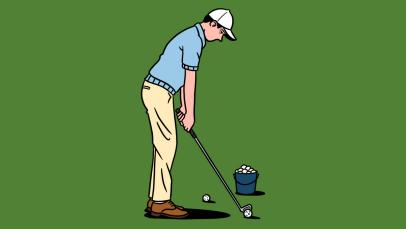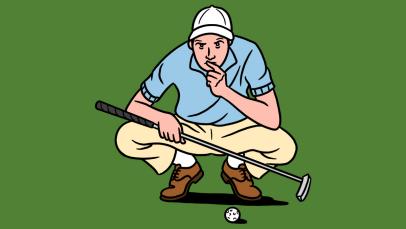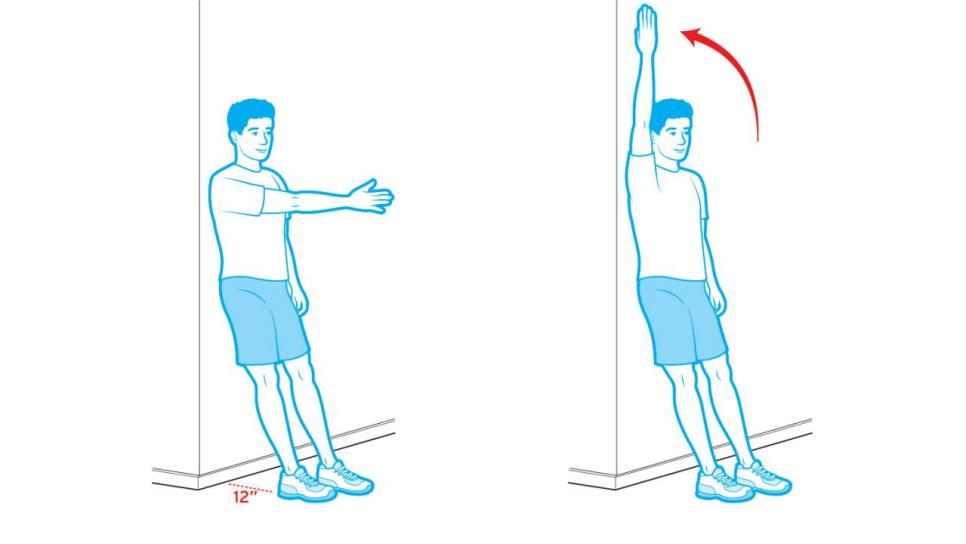This article first appeared in Low Net, a newsletter written for the average golfer by an average golfer. To get Low Net right in your inbox, sign up for Golf Digest+ right here. Have a topic you want me to explore? Send me an email at [email protected].
Of all the gritty performances in golf, right up there with Tiger Woods winning the U.S. Open on a broken leg, I think of the time my colleague Chris Powers embarked on our trip to Bandon Dunes while battling a case of the shanks.
There is no crueler paradox than a dream golf trip paired with a nightmare golfer affliction. At least for Chris after hoseling his way through the start of our opening round at Pacific Dunes, the issue mercifully subsided. But even then, fear of another lateral laser nagged at him the whole trip—and to some extent, still does.
“Even when you do snap out of it, the possibility of another shank showing up at the worst possible time constantly lingers in the back of your brain,” Chris said. “I still lie awake at night wondering if they’ll come back.”
For the record, Chris was not happy that I reminded him of this episode—“can’t believe you’re making me talk about this”—but he really should blame Tiger Woods and Anthony Kim. Both players “presented hosel” (Tiger’s wording) in high-profile rounds recently, reintroducing the shank back into the public sphere. For those of us who have had the issue once, it never quite goes away. I’ve had my own bouts: a media day at a choice tour venue in which I was flaring shots knee-high up the driving range line. There was also an infamous lunchtime range session years ago in which one unfortunate shot was caught on video, and which resurfaces in work group chats roughly once a month (I maintain it was meant to be a high draw).

Given the limited skill set of its author, the Low Net newsletter should really steer clear of golf swing advice, but I’ll at least pass along a few nuggets that have resonated with me.
For starters, if it helps to compare swing faults to physical ailments, I think of the shanks as a 24-hour stomach virus. It can come on fast and violently, but often leaves abruptly as well. They usually surface when I lunge in toward the ball on the downswing, which promotes contact with the hosel instead of the center of the face.
An immediate fix has been this Butch Harmon tip in which you place a headcover just outside the ball, which promotes an inside path to impact with the clubface squaring up.
That usually does the trick, which leads to maybe the nicest thing I can say about the shanks. They don’t need to hang around long, even if memories of them linger forever.
More Low Net  Low Net How to be a less miserable golfer
Low Net How to be a less miserable golfer  Low Net I’ve become the annoying training aid guy
Low Net I’ve become the annoying training aid guy  Low Net The idiot’s guide to course management Questions from Low Netters
Low Net The idiot’s guide to course management Questions from Low Netters
Another great round of questions this week. Have a question or idea for a future topic? Send me an email and I’ll do my best to dive in.
How about some help with us older golfers with arthritis. I have a restricted backswing and can’t get my arms up very high and my right hip tends to sway instead of turn. —Harry
Harry, what I’ve learned about the golf swing talking to teachers and trainers, as wellvas our own editors, is how often problems stem from a lack of hip mobility. I took your question to our fitness editor Ron Kaspriske, who has addressed this issue often over the years. Ron has also worked with Golf Digest fitness advisor Ben Shear to create a mobility test you can take on your own to gauge your hip flexibility, along with exercises you can do to strengthen them.

Hey Sam, here’s a winning strategy for Low Net golfers: play forward. So many golfers play tees too long for their game, which is not as fun and concurrently lowers their handicap. Thus, the strategy for Low Net is to play more forward tees (when not in tournaments) and work on your short game. —Douglas
Douglas, I toyed around with playing forward tees last summer, because it is fun, puts a new emphasis on your short game and brings a new type of decision-making about the targets you choose into play. What I hadn’t thought about is how playing a lower-rated setup will also raise my handicap. Crafty! Do I want this to happen? Is this even ethical? I suppose it is if you’re trying your hardest on every shot regardless, but I’m still dumb enough to resist seeing my handicap going up, even if it’s what I probably need.
What is ‘Side Bend’?
To the extensive list of things I think about in my golf swing, I have added “side bend” as something that needs work. Not sure what that means? Luke Kerr-Dineen does a masterful job explaining in this feature on Will Zalatoris. The video centers on the tour star’s recent swing changes, but you’ll see why it’s relevant to the rest of us.
This article was originally published on golfdigest.com



